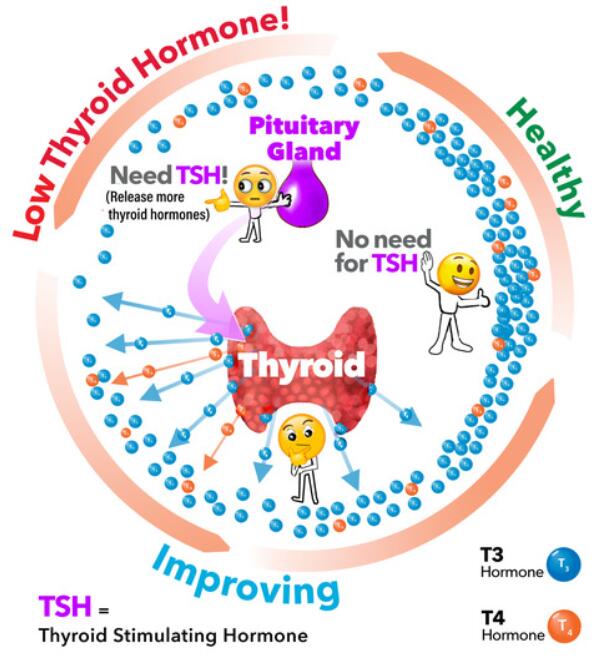Categories
- Blog (808)
- Customer Purchase (378)
- Best Sarms stack (6)
- Weight loss peptide (39)
- Other supplements (35)
- Home made (6)
- Testosterone & TRT & AAS (75)
- PCT (28)
T3 increases the body’s metabolic level, and contributing to fat breakdown and muscle growth. Where does the body’s natural triiodothyronine T3 come from?
There are two sources of T3 in the body, one directly secrete by the thyroid gland, which accounts for 20% of the total T3 in the body. The other converte from T4, which makes up 80% of the body’s total T3.

The production and release of thyroid hormones, T4 and T3 control by a feedback loop on the hypothalamic-pituitary-thyroid axis. T4 and T3 are the main thyroid hormones.
When the body detects low levels of thyroid hormones (T4 and T3), the pituitary gland releases thyrotropin to stimulate the thyroid gland to produce more thyroid hormone. The amount of thyroid-stimulating releasing hormone produced by living organisms depends on the body’s need for thyroid hormone. Once the levels of thyroid hormones (T4 and T3) in the blood reach normal levels, the pituitary gland stops releasing thyroid-stimulating releasing hormone. In this way, the system enables the body to maintain constant levels of thyroid hormones (T4 and T3).
In this process, the thyroid hormones T3 and T4 are present at the same time, so under what circumstances producing T3, and under what circumstances producing T4?
The process of thyroid hormone synthesis can summarize as four steps: “polyiodide – activation – iodide – condensation”. T3 and T4 forming in the condensation of the last step. In the process of iodination, the ammonia on the phenyl ring of tyrosine replaced by activated iodine catalyzed by TPO(thyroid peroxidase) to form MIT(monoiodotyrosine) or DIT(diiodotyrosine). Then, in the process of condensation, catalyzed by TPO, one MIT and one DIT condense to produce T3 and a very small amount of rT3, and two Dits condense to produce T4.
This part of T3 directly generate and accounts for about 20% of the total T3. The other 80% of T3 that the body needs convert from T4.
T4 is produced by a deiodination reaction, in which an iodine atom is removed by metabolic enzymes in the peripheral tissues to form T3. There are three types of deiodinases involve in this process, type I, type II and type III deiodinases. Type I is mainly in the liver, kidneys, thyroid, and pituitary gland, type II in the central nervous system, pituitary gland, brown adipose tissue, and cardiovascular tissues, and type III in the placenta, CNS, and hemangiomas. Type III deiodinase mainly converts T4 to rT3, which, unlike T3, is inactive and counteracts some of the effects of T3.
The conversion efficiency of T4 to triiodothyronine T3 is different, and the conversion efficiency of young people is higher than that of old people.